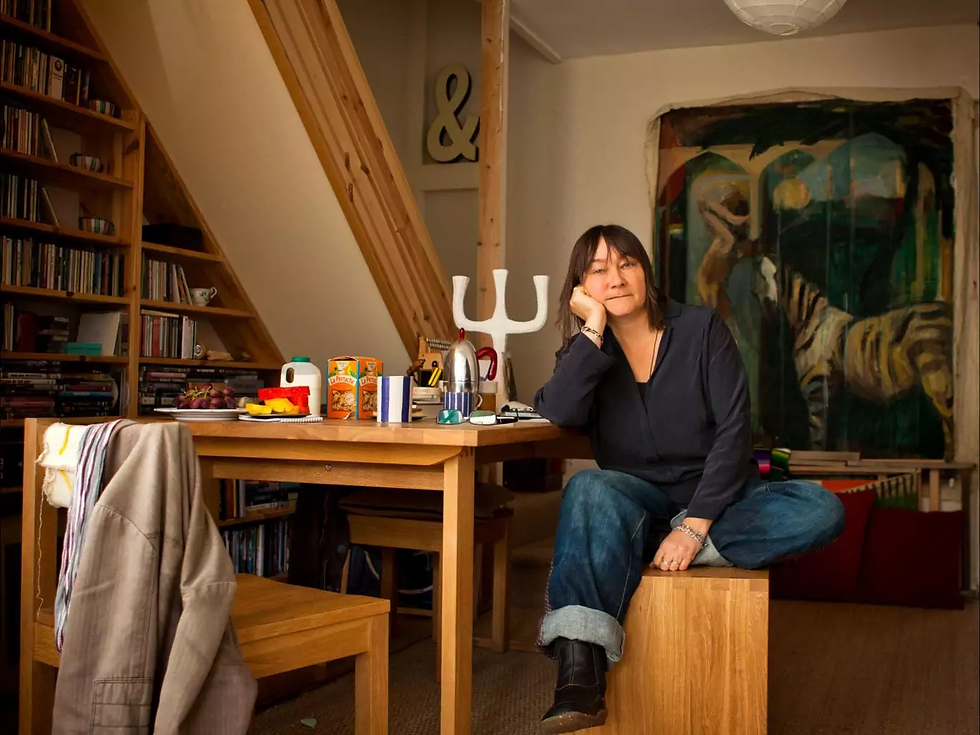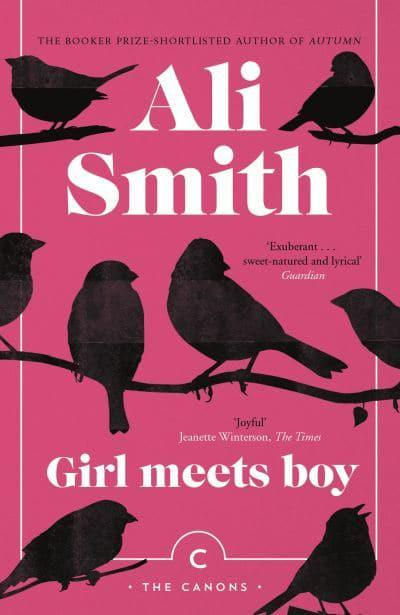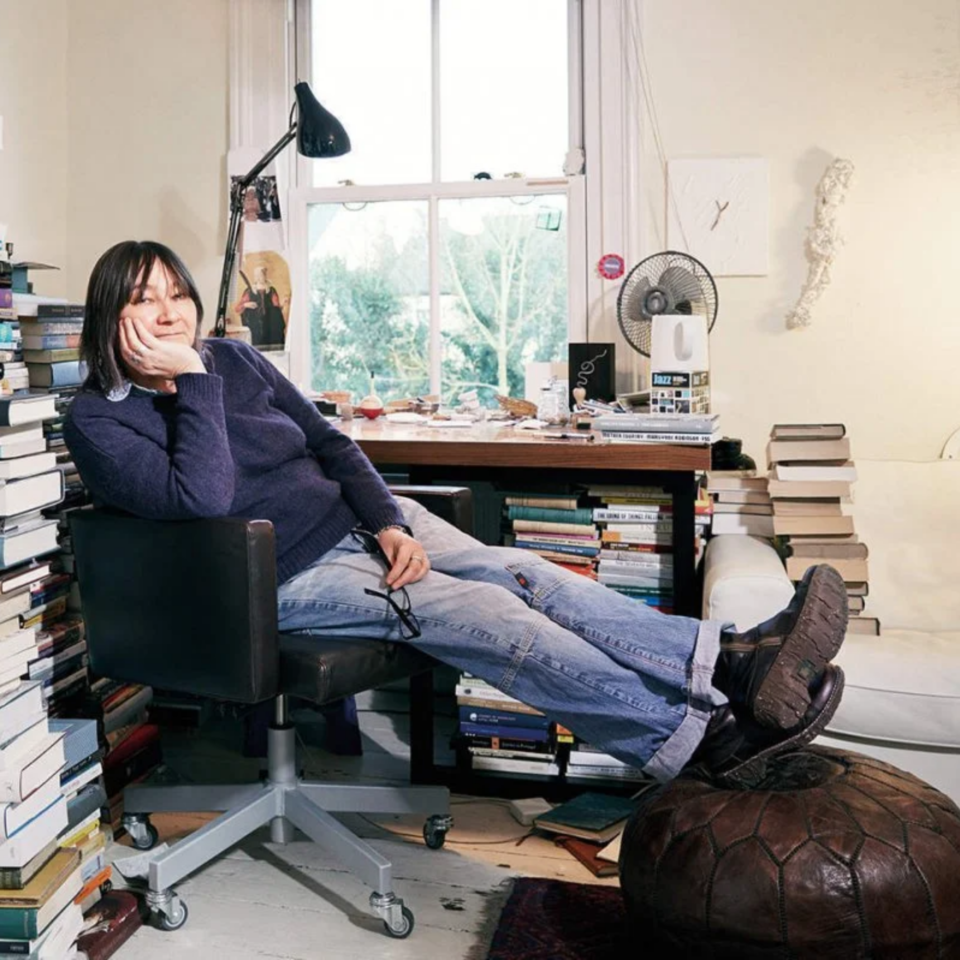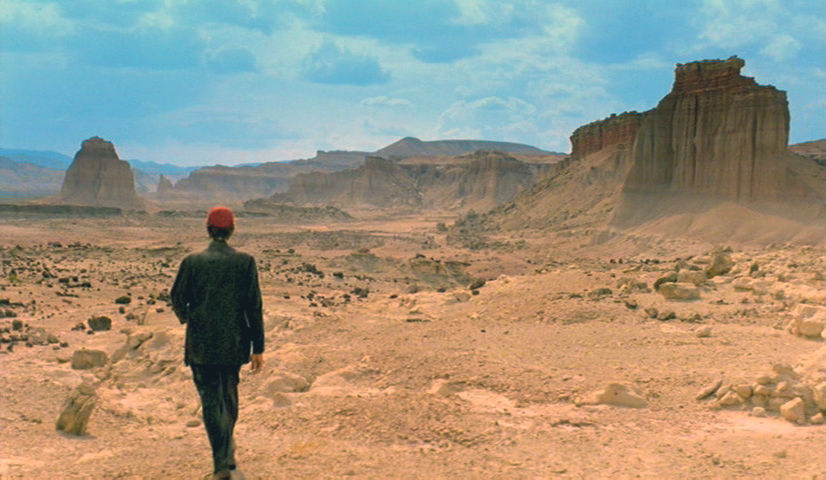Ali Smith - Genre, Medium and Myth
- decapvada
- Jun 17, 2024
- 6 min read
Updated: Jun 19, 2024
Artists are human beings. A construct of their time, related to the events, social and political, they are nurtured through as children and experienced as adults. If a human is a reflection of the human state, conscious or not, then is art not a reflection of humankind? When creating multiple works the artist may inject, consciously or not, their experiences or even use their art as a vessel for their beliefs. Sometimes this will repeat, creating a pattern of ideas through history, ready to be observed, picked and studied. Here are two examples from Ali Smith: Hotel World and Girl Meets Boy.

Smith is an author who is not just concerned with telling a story through prose fiction but also with the process, result, and evolution of storytelling. Her work suggests ideas concerned with how a tale is told, be it as prose in physical, aural, or visual forms of messaging. How these ideas function, with such considerations as how they are interpreted, how they imitate and mock the social and political nuances of the time, and how they can come to represent not only antiquated beliefs but new, free thought, are just some of the themes that recur throughout her work. In her interview with Contemporary Women’s Writing, Smith (2015) states her admiration for the paper medium versus the Kindle, referencing the very human connection with physical objects owned over time, going as far as to draw the comparative metaphor of the spine of a book and the spine of a creature, reminding us that books originally were formed from the leather of an animal. They are a far more organic method of delivering art than the e-reader, allowing us to project our human emotions and memories into them.

These two novels separated by six years are concerned with the art of storytelling in similar ways yet pursue their goals with different approaches. Hotel World is a novel possessing literal awareness of its actual medium, the physical object that is a book with a purpose. Smith utilises typography as a physical tool, her characters physically represented by the printed letters on the page, imbuing them effectively with a liveliness exclusive to the medium. Regarding Girl Meets Boy, if the fiction novel is a modern myth, then it is a classical myth within the modern myth.
Hotel World tells its story through many different voices that take part in or narrate a series of interlinking events that occur in and around the titular Global Hotel. Take, for example, Penny, the reporter, who is assigned to write a review, a story, a myth, about the Global Hotel (pp. 125-181). Sara Wilby’s dead body tells the story (pp. 16-26) of the days leading to her death to her own, visiting ghost, and the reader, acting as a prologue-styled narrative device. In Girl Meets Boy, a book commissioned to rewrite classical myth, Smith asks: ‘is advertising a new kind of mythmaking?’ a ‘persuasive myth’ in fact (p. 89), like the kind Penny is composing. Symbolically narrative and myth enterwine through these character arcs, blurring their meaning.

During the chapter ‘us’, this kind of myth-interpretation occurs in the very prose of Girl Meets Boy. Anthea, the narrator, summarises the story of Iphis that inspired the narrative, told to her by her lover Robin, conveying all of its most important elements in less than two pages, replicating an encyclopaedia entry (pp. 86-88). ‘Though actually, the telling of it went much more like this’ (p. 88), she says at the start of the next paragraph. Smith then presents the myth once more, showing the actual retelling and listening between the two characters, including realistic conversational interruptions and interactions between the pair. This is the same story, told at two different times in the chapter yet using stylistically different language and narrative modes. Here, Smith performs several feats as a storyteller. She is commenting on the actual telling of a story, the method and therefore purpose and result. This same story feels different between the two recitals because of Smith’s exact word choice. Furthermore, the original summary’s purpose is to educate rather than to entertain, to ensure that the reader is fully aware of the story of Iphis by representing it in as clear and digestible form as possible.
Robin states the fluidity of myth later, coining Smith’s perspective succinctly. Myths evolve and change, are interpreted: ‘It’s what we do with the myths we grow up with that matter’ (p. 98). While Smith is discussing gender and change in the context of the narrative, when viewed alongside Hotel World’s there is great synergy for a story that is perceived through the perspective of the reader. Regardless of how they are told to us, we do what we will with myths in the end. When Penny sees Else she interprets her personal story through her perspective and ignorance (pp. 139-171). While Smith’s goal here is satire and irony, the use of outlook and interpretation crosses over with Smith’s use of myth in her storytelling modes, suggesting that the poor person is a mythological creature to Penny that had never existed in reality until now.

Intriguingly, Penny’s role is completely reflected in Girl Meets Boy with the meeting between Keith and Midge during the chapter ‘them’. Essentially the antagonist of the story, Keith requests that Midge manipulate the media regarding his bottled water company, ironically called Pure. The creative mogul welcomes Midge to the ‘Pure Dominant Narrative Department,’ and asks her to use her ‘way with words’ and lie about building the public image of the company (p. 120).
Aside from the thematic connections between these novels, Smith displays her distaste for globalisation with the symbolic, central pillar organisations that the events of both narratives occur in and around, namely the Global Hotel and Pure. With Hotel World, this is no more obvious than with the very representation of Elspeth’s relationship to the building that she begs outside. ‘We think the world of you’ (p. 56) she reads from the company message on Lise’s badge, ironically.
Coming from an era where Tony Blair’s Labour government shifted ‘away from the party’s traditional focus on the interests of the working class and the poor and more disadvantaged segments of society’ while also moving toward a ‘friendlier attitude toward capitalism, the market and globalisation’ (Doloughan, 2019, p. 242) it is no wonder that Smith would utilise the literary medium as a force of opposition. Referring back to Smith’s interview with Contemporary Woman’s Writing, she states that the novel is a ‘revolutionary form’, that a reader ‘will be changed when you finish reading it.’ She recognises that literary art has a sense of momentum and reflection in the realm of political and social change, that it both changes with time and yet also ‘shows us the ways in which it is possible for the given shape of things to change’ framing the medium as a weapon for social and political change (Smith, 2015).

Smith shows her disillusionment further with the rise of corporations in the chapter ‘Future conditional’ (pp. 81-122). As Doloughan (2019) states, ‘Lise is grappling with bureaucracy,’ being forced to fill in a series of forms to apply for a well-being benefit, the questions asked appearing ‘trivial and ‘unsympathetic’ toward her health (p. 243). Smith contrasts the value of human mental health against the demands of a cold, clinical corporation, much as how Keith rationalises his bottling of spring water in Girl Meets Boy. Smith has Keith firing off stats to prove the economic value of water (pp. 35-36), resulting in the incredible statement that in ‘less than twenty years’ time’, over eight hundred million people will not have access to water and that his corporation will be selling it to them, an idea that is so ludicrous and said with such conviction that Smith’s word choice and dialogue ooze irony. Later, during his private meeting with Midge (p. 123), Smith has the mogul ironically brand the ‘irate ethics’ as ‘trouble makers who are trying to involve’ them in a ‘despicable religious war’, prohibiting his company from finishing their filter dam. That supposedly, Pure’s dam is blocking them from their own ‘access to fresh water and ruins their crops’. Keith's straight-talking manner which is completely devoid of compassion for the suffering caused by the production of his product creates a sardonic, satirical dictator out of him, his product made of the exact ingredients that are being stolen from his victims.
Relating art and the artist in Girl Meets Boy, the character of Robin is introduced protesting against the Pure company by spray painting her anti-messages on the side of the company building (p. 43). Robin acts as the teacher of myth-making not just to Anthea as she listens to her, but also to the reader. She is conveying her themes of myth-fluidity and anti-globalisation just as Smith herself does as the author of these two works, as a painter of words.




Comments